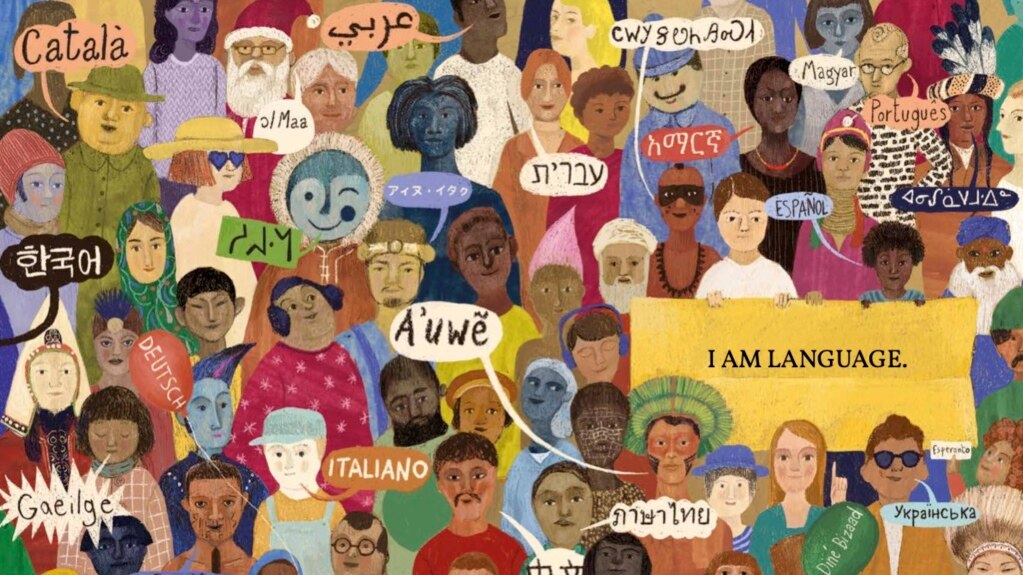See if you know the answer to this riddle:
“I have been around for a very long time. Longer than toys, dogs, or anyone you know.
“My roots go back many centuries. Some of them even longer.”
“I can connect you to the past, the present and the future. I make you human.”
Can you guess what I am?
The answer is language.
Children’s author Victor D.O. Santos asks readers that question in his book, What Makes Us Human. Each page on the book provides a clue to the riddle’s final answer. Artist Anna Forlati illustrated the book.
Santos told VOA Learning English that the book is about the value of language. It is also meant to bring more attention to the world’s native languages.
Native and indigenous languages are disappearing quickly. The United Nations Educational, Scientific and Cultural Organization (UNESCO) estimates that 40 percent of the world’s 7,000 languages may disappear by the year 2100.
Santos, who is also an educator and linguist, has studied indigenous languages in his native country, Brazil.
He said that his new book brings “attention to the fact that many languages are disappearing ... (and ) this linguistic heritage that we have in the world is slipping through the cracks."
The United Nations has named the years between 2022 and 2032 as the International Decade of Indigenous Languages. UNESCO says the declaration is meant to bring worldwide “attention on the critical situation of many indigenous languages.” It also says it is meant to provide more resources to protect and revitalize such languages.
Santos said UNESCO offered to partner with him and help expand the book’s reach. The book has already been licensed into 22 different languages. That includes versions in Mapundungun, a language spoken by the Mapuche people in Chile and Argentina, and into Hnähñu, a language spoken by the Otomí people in Mexico. Santos said the book might soon be published in native Hawaiian as well.
The Chilean government recently published 27,000 copies of the book for public schools, where there is a large percentage of indigenous children.
A large number of cultures and languages are represented in the book. Its final page has a drawing of people saying “hello” in many languages. There are characters saying “hello” in common languages like Arabic, English and Spanish. And indigenous languages from the Xavante people in Brazil and the Cherokee people in the United States are also included.
Another drawing has different scripts, or writing systems, hidden in trees.
One page has drawings of 12 indigenous groups around the world wearing their traditional clothing. The words to go along with the drawing note the fact that indigenous languages around the world are disappearing: “When one of me disappears, a culture may also disappear. A unique way to view and understand the world. Gone. Forever.”
Santos said his book “has an adult layer to it. It's not just for kids.”
One page has a drawing of a parent and child fleeing a conflict or war. Another person is holding a sign that says, “No War.” “I can show you love. But also hurt you,” the page reads.
Santos said he was thinking about the war in Ukraine for that page. The drawing referenced a Ukrainian reporter who interrupted a Russian state media report while holding that same sign.
“What Russia is doing to Ukraine is not just attacking their territory and killing Ukrainians, but it's denying their culture,” said Santos, whose wife is Ukrainian and children have been raised speaking the language. “They're imposing the Russian language in the Ukrainian territory.”
Santos said there are several ways to understand the page’s message.
“It's to make people aware that words have weight,” he said. “Language can be used as a weapon and as a tool. And you can do good, or you can do ill with it.”
I’m Dan Novak.

